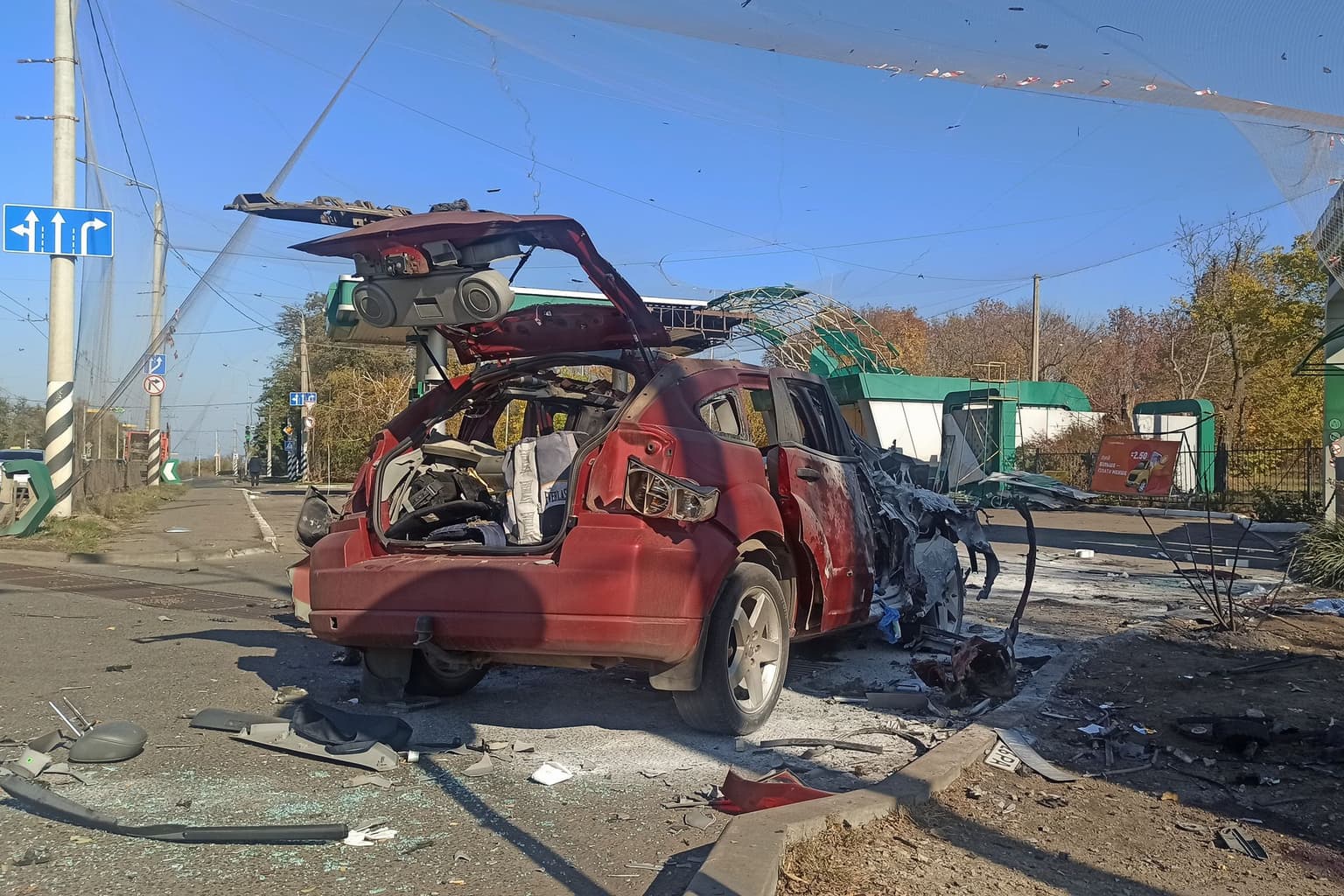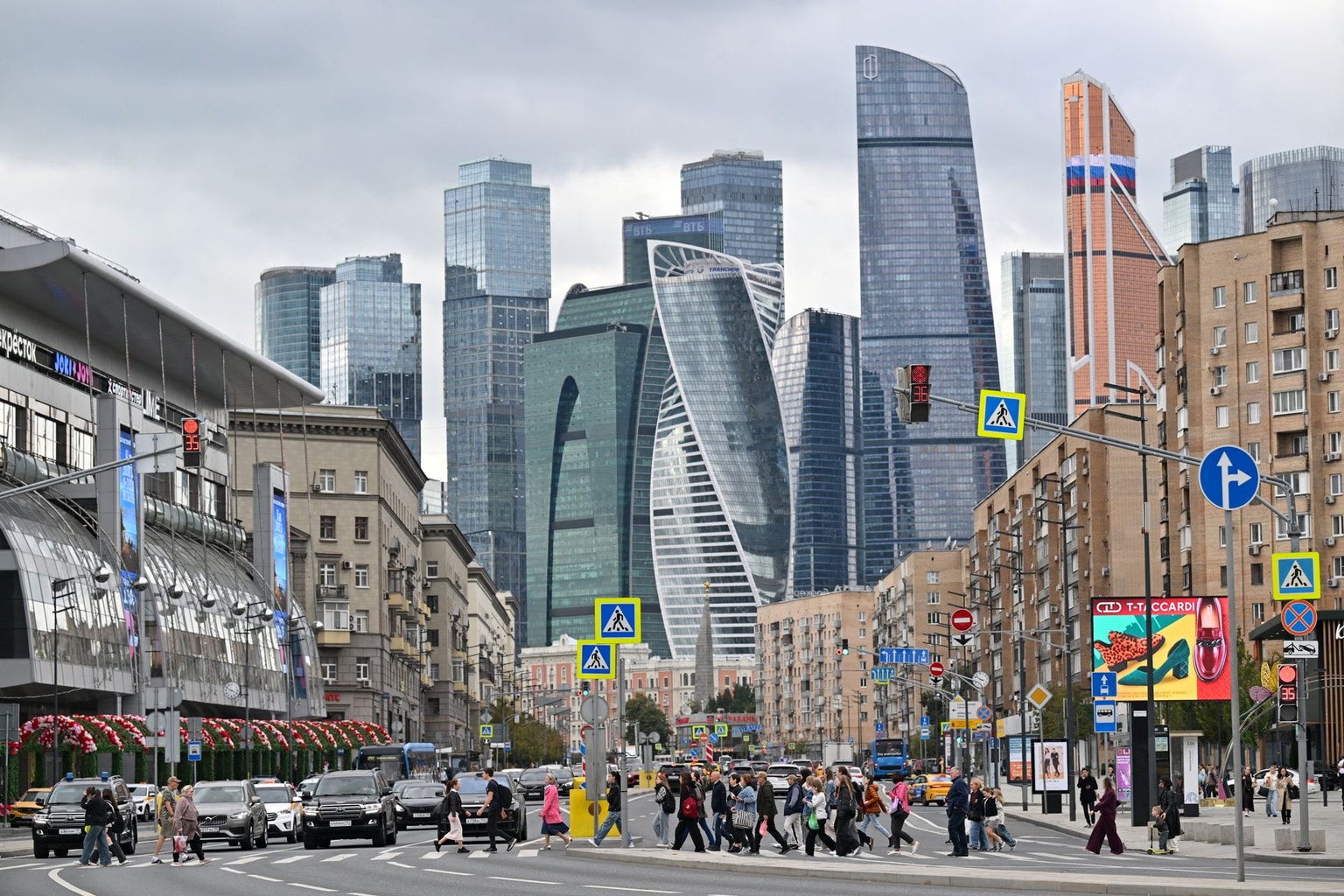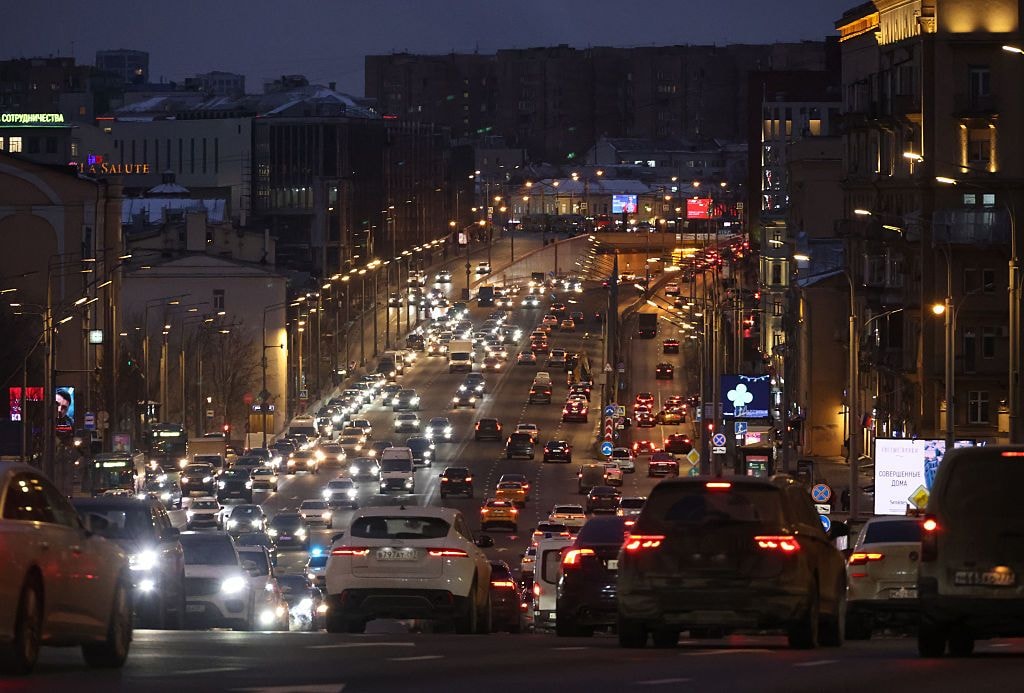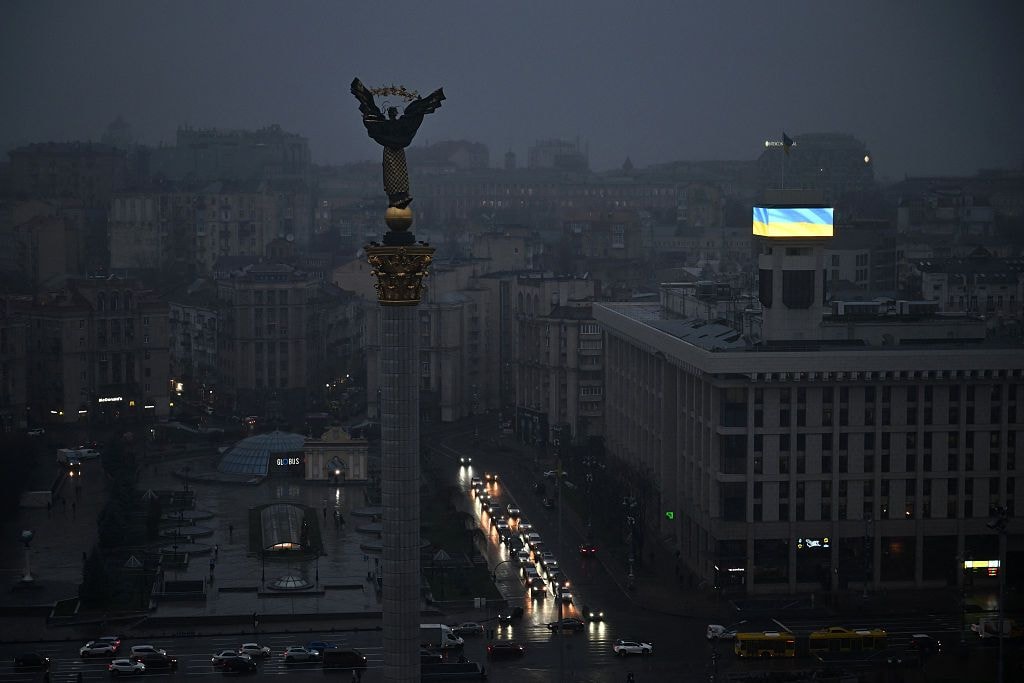
How Russian drones are turning Ukraine's front line into a no-go zone for journalists
Wreckage of a car in which Ukrainian journalists were killed remains at the site of a Russian drone strike in Kramatorsk, Ukraine, on Oct. 23, 2025. (Artem Stepanov/Suspilne Ukraine/JSC "UA:PBC"/Global Images Ukraine via Getty Images)
With incessant Russian drones flying all over areas near the front that once were safer, it has become increasingly difficult for journalists covering the war in Ukraine to keep doing their jobs.
In October alone, three journalists were killed and five were wounded while working in eastern Donetsk Oblast. The Russian attacks happened relatively far from the front, sometimes more than 20 kilometers (12 miles) away.
“October 2025 showed a new risk for journalists with an increase in Russian first-person-view (FPV) drone attacks against media professionals identified as journalists,” Pauline Maufrais, Reporters Without Borders (RSF) Regional Officer for Ukraine, told the Kyiv Independent.
“Journalists are not targets and must be protected.”
The first attack on Oct. 3 killed French photojournalist Antoni Lallican, 37, and left his Ukrainian photographer colleague, Heorhii Ivanchenko, with a leg-amputating injury. They were working with the 4th Tank Brigade when they came under a Russian FPV attack near the town of Druzhkivka, about 15 kilometers (9 miles) from the nearest front at the time.
The second attack on Oct. 13 wounded three members of the German newspaper Die Welt team reporting at a position around 25-30 kilometers (16-19 miles) away from the front. A Russian Lancet drone — usually used to target high-value targets — struck when they were at a Ukrainian air defense position in the east.
A Ukrainian soldier they had just finished interviewing before the attack was killed, and another had to have his leg amputated.
“It was an ordinary evening at first,” Die Welt's chief reporter Ibrahim Naber, 33, told the Kyiv Independent of the night he spent with a unit shooting down Russian drones flying toward big cities such as Dnipro, the nearest to the site, or Kyiv.
“We had only a few seconds before it hit. The drone struck the truck (standing a few meters away from the Ukrainian soldier killed) directly. The explosion threw us all to the ground.”
“I landed a few meters away and touched my head, legs, and arms — everything was still there. Then I heard screaming in Ukrainian and English. (Ukrainian soldier) Konstantin lay motionless beside the truck; he had been killed instantly.”

Naber and others carried Ukrainian producer Ivan Zakharenko, wounded in both legs, about 200 meters to a treeline and gave him first aid. Zakharenko was discharged from the hospital but still has shrapnel in his leg.
The third one on Oct. 23 killed two Ukrainian journalists, Olena Hramova, 43, and cameraman Yevhen Karmazin, 33, working for Freedom TV. An FPV drone struck them in a car in Kramatorsk, a city long seen as a relatively safe part of Donetsk Oblast, located about 20 kilometers (12 miles) from the front. The third crew, special correspondent Oleksandr Kolychev, was injured.
“(These attacks) show that this specific danger has reached deeper in regions near the front lines,” Maufrais from RSF said, stressing that the ongoing investigations on the attacks should “identify the exact perpetrators.”

The new threats brought on by Russia’s ever-more far-reaching drones have forced journalists to reassess the risks and work differently.
Some Western media have long enforced a rule to stay at least 30 kilometers (19 miles) from the front line to keep journalists safe, and others have begun enforcing similar protocols this year, effectively canceling trips to the war-torn east, the epicenter of the war. This is especially challenging for video journalists and photojournalists, who need to be physically present.
The Culture Ministry said on Nov. 3 that 18 journalists have been killed while performing their duties since Russia launched a full-scale invasion of Ukraine in 2022, with 49-year-old Ukrainian camera operator Yevhenii Sakun being the first fallen victim in March 2022.
“The biggest challenge for our reporting now is the expansion of the so-called kill zone, which extends up to 15 kilometers (9 miles) behind the contact line,” Naber said.
“This is the area where small kamikaze drones hunt every single Ukrainian or Russian soldier — you can’t move without being under constant threat.”
Naber said that compared to 2023, when his team embedded with a Ukrainian drone team inside Bakhmut, only 1.5 kilometers (0.9 miles) from Russian troops, in daytime, working in the same way now would “almost certainly” come under a Russian drone attack.
“The area has become so saturated with drones that any movement is a threat,” Naber said.
Naber, who was also chased by Russian drones while trying to evacuate from a position in May, said that he prefers to go to the front line now alone, without a fixer or a camera operator, to reduce the risks for his team or the soldiers.
Diana Butsko, a 31-year-old Ukrainian war reporter for Hromadske media outlet, agreed that Russian drones reaching areas that were once safer to work has been “a turning point,” forcing her team to adjust the way they operate in the front-line areas.
Butsko, a well-known video journalist in Ukraine, said her team had to begin reassessing the risks in accordance with the drone threat from around the summer of 2024, on top of the artillery threat that existed from before.
The gray zone, or contested area between opposing forces, is expanding, making the front line blurrier than ever.
“You have drones, you have infiltrations of Russian reconnaissance groups, and you don't know what's waiting in front of you,” Butsko told the Kyiv Independent.
Butsko said the last time she was able to go to an infantry position was in the winter of 2023, and “it’s getting more difficult and difficult to reach the front line in general, and it’s quite unlikely — almost impossible — to reach the infantry position.”

Butsko’s team has not been staying at hotels for the past year and is trying to do more interviews in safer areas rather than going to a position to film the actual work. She also said her team is trying not to drive their own car when going to areas less than 20 kilometers (12 miles) from the front line, and sometimes considers whether wearing the press sign is a good idea, as it makes them stand out for the Russian troops.
“But we are trying to do our best, it’s important to cover the front line to show the price of this war, to show the bravery of our men and women, and we are trying to reach as far as we can,” Butsko said.
A press officer of the Third Army Corps, previously known as the Third Assault Brigade, who goes by his callsign Disney, said that he can no longer take journalists closer to the front line for safety reasons. He explained that the well-known unit tries to show and conduct interviews on training grounds and share its own videos or photos with journalists so they don’t have to get closer to the front.
“The danger zone is growing every day, and the Russians do not care whether you are a journalist, a service member, or a civilian — they ignore any rules or norms of warfare,” Disney, who asked his full name not to be disclosed in accordance with military protocols, told the Kyiv Independent.









